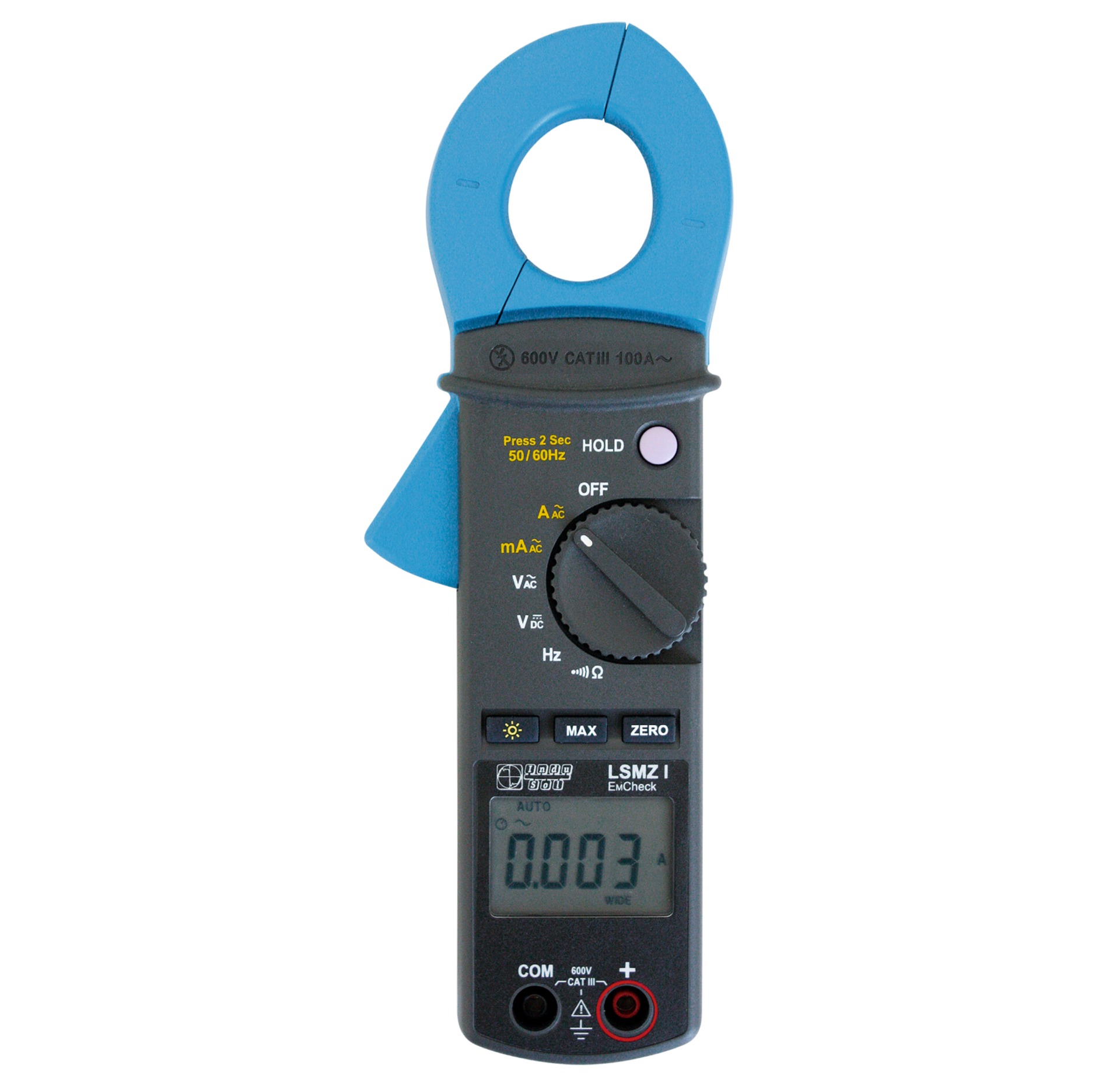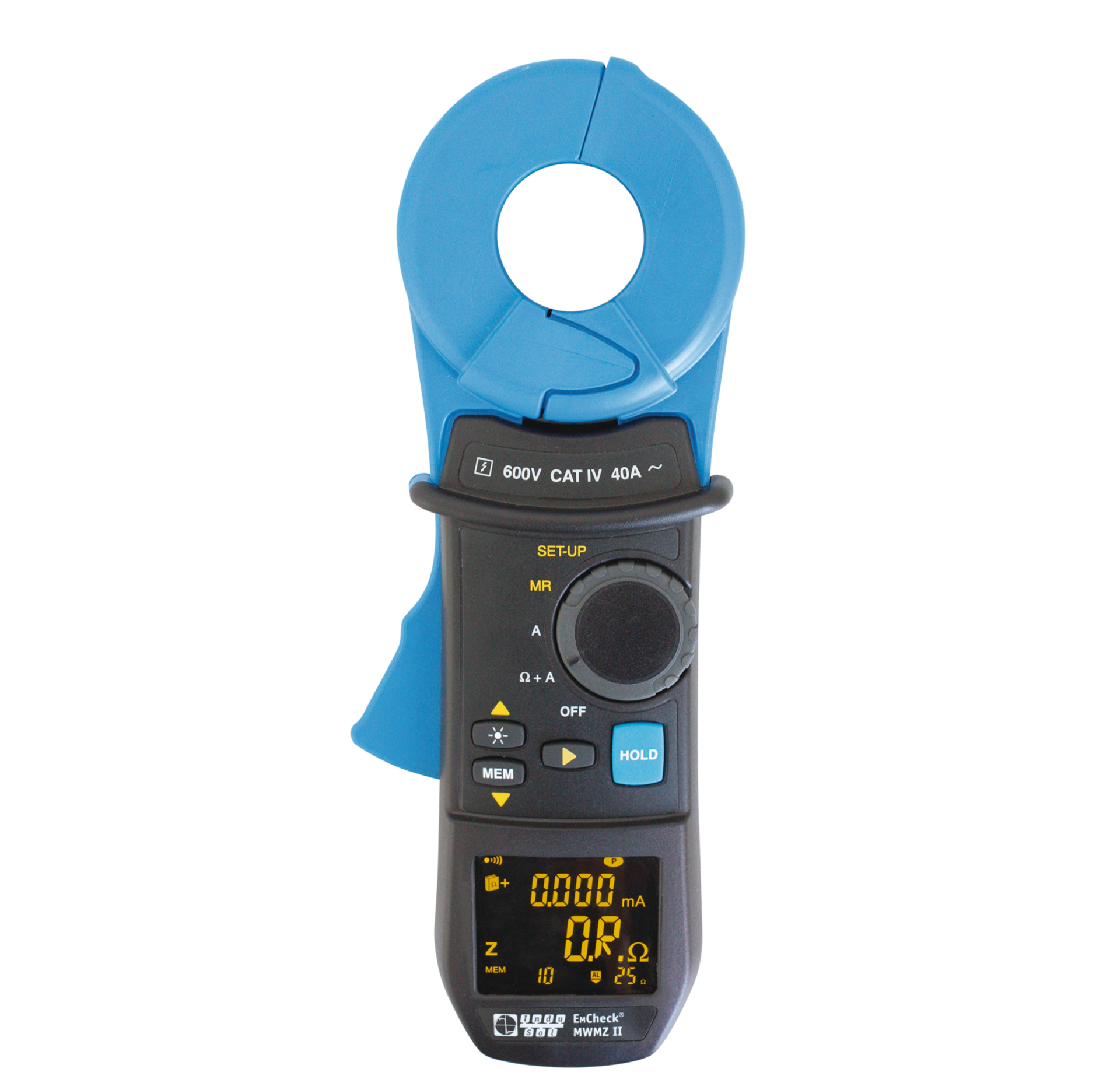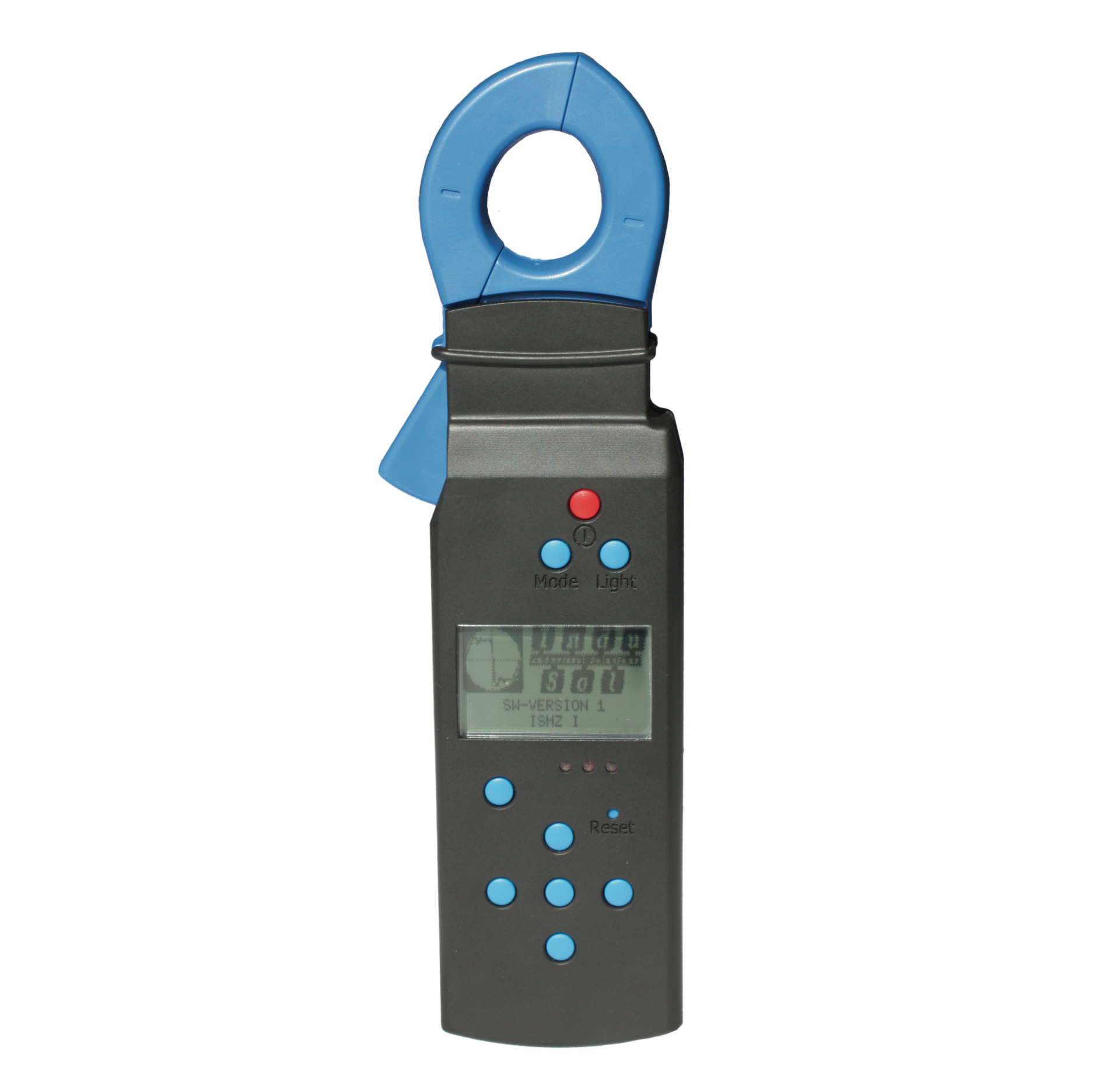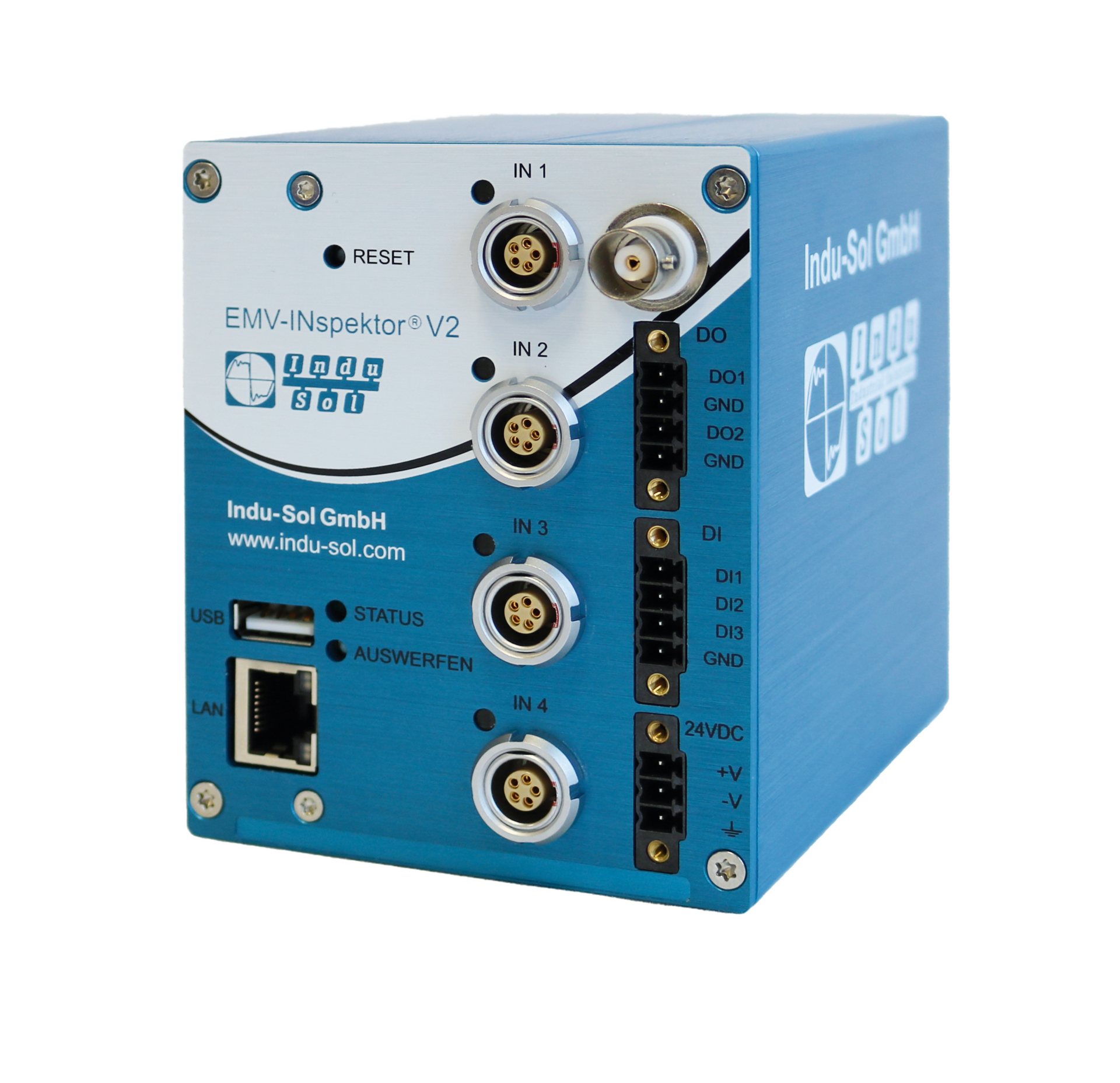EMC Diagnostic Tools:
Detecting hidden sources of interference in Industrial Networks
In modern industrial plants, switched-mode power supplies, drive solutions or frequency converters influence the load status of your equipotential bonding system. These correlations cannot be determined with conventional RMS current measuring instruments. For this reason, precise EMC measurement is not as trivial as it may appear at first glance.
For illustration: More and more drives are RPM-controlled. The connected frequency inverters lead to higher-frequency operating currents. These result in strong, changing magnetic fields which, for example, lead to an undesired shielding current on the bus cable. Conventional current clamps cannot identify the cause. Thus, the EMC interference source would first remain undetected.
Measuring Shield Currents
Avoid shield currents and measure for current leakage
Measuring Equipotential Bonding
Prove equipotential bonding according to DIN EN 50310
Intelligent Current Measuring
Detecting and evaluating parasitic currents inteligelllently
Electromagnetic Interferences
Detecting interference currents along fieldbus and cable paths
Many factors determine the quality of communication in industrial networks. While some of these factors are tangible, such as the cabling or the cable length, others can only be recorded using special measuring devices, such as electromagnetic influences.
Often underestimated as one of the most common causes of errors in machine and system downtimes, the risk of sporadic system failures due to electromagnetic interference increases with the increasing degree of automation. Increased control frequencies and dynamics in data exchange contribute to the fact that it is becoming more and more complex to guarantee electromagnetic compatibility (EMC) in networked production.
“Leakage currents,” a term to describe currents that flow via undesired paths outside of the laid lines, are among the most disruptive factors for stable EMC. For example, when a voltage is induced in the shield of an adjacent network cable via the magnetic field around a live motor line, this is the case. If this is not earthed on both sides, the shield current is usually diverted via the connected device and affects components and electronics. In the long run, this will also impair the quality of communication in the network. For the detection of the screen and leakage currents in the frequency band of 50/60 Hz and 5 Hz-1 kHz, Indu-Sol recommends the leakage current clamp EMCheck® LSMZ I.
Interactions between power supply and control technology often lead to sporadic disruptions, which is why long-term monitoring makes sense. The EMCheck® ISMZ I clamp is the ideal measuring device for this. It records all line-bound interference currents for up to 14 days and can also be used in an environment that is severely affected by interference. To check the quality of the installed shielding and earthing measures on a system is in accordance with standards, metrological evidence of good equipotential bonding has to be provided. An extensive set of different EMC measuring devices is not required for this. The EMCheck® MWMZ II measuring clamp is sufficient, which, if needed, also determines the shield loop resistance of bus or measuring system cables and resistances in return current paths.
Indu-Sol has developed the EMV-INspektor® V2 for permanent monitoring of electromagnetic influences and disturbances. The diagnostic device can measure current and frequency along network cables, via the 24 VDC supply, via the 230/400 VAC low-voltage distribution system, in the equipotential bonding system, and via the encoder lines. The recording and analysis are possible in parallel at four measuring points, contactless and without interruption. Individual quality parameters can be assigned to each channel so that maintenance staff can carry out a specific condition assessment. The INspektor® is a suitable tool to permanently avoid EMC disturbances in the automation environment with its functions.
In short: 6 things that make our professional EMC measuring tools unique:
1. Smart long-term monitoring instead of punctual measurement
Due to complex correlations in modern industrial plants, many EMC interference factors only become visible during long-term measurements. These remain slightly undiscovered during selective measurements.
Conventional EMC measuring devices usually measure selectively and are only a snapshot. This serves primarily to determine the basic quality of your equipotential bonding at a certain point of time.
2. Reveal sporadic, non-reproducible incidents
Unlike common current clamps, EMCheck® ISMZ I and EMV-INspektor® V2 have a long-term measuring function. Thanks to the continuous measurement and recording of currents, sporadic interference peaks become visible. Especially sudden interference impulses, such as a switching action on the contactor, cannot be detected by conventional current clamps.
3. Understanding EMC correlations without additional special equipment
Measure at up to four measuring points simultaneously with the EMV-INspektor® V2. Thanks to the parallel data recording of different measuring channels, specific correlations and interactions can be identified. This enables you, for example, to correlate errors on the fieldbus with PE/PA currents.
4. Identifying interference causes – using frequency analysis
In addition to the current curve, also the frequency spectrum of the current is evaluated. On the basis of the information about the frequencies, you can draw conclusions about possible sources. Expert hint: Currents in the kHz range require other steps to improve equipotential bonding than, for example, 50 Hz currents.
5. Non-contact and interruption-free EMC monitoring
All our EMC measuring devices can be installed and used during operation. The large clamp heads fit over all common plant and industrial network cables. This ensures the greatest possible flexibility and applicability.
6. Data evaluation using included software
With EMCheck® View, our free EMC software, you can conveniently evaluate the measurement data on your computer. You can visualise even the smallest disturbance signals in detail using the zoom functions.




